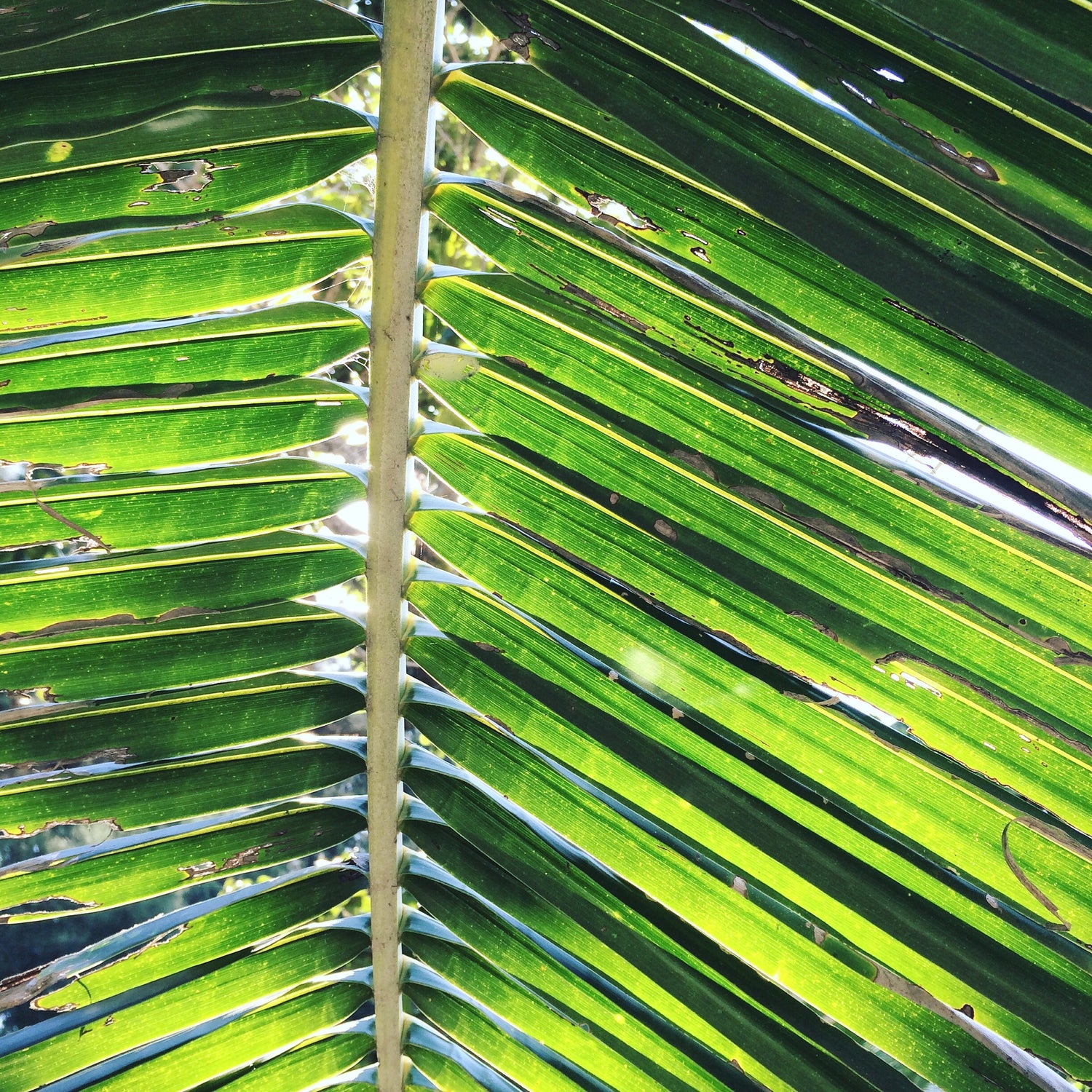Potassium deficiency in Coconut palms
Potassium is a major nutrient taken up by coconut palms in large amounts for its metabolic activities such as photosynthesis, enzyme activation, and the synthesis of starches and sugars. The deficiency of potassium in the coconut garden occurs due to the continuous uptake of the element by the palm. It is an important nutritional issue that affects the growth of the trees, yield, and quality of coconuts.
Symptoms of Potassium Deficiency in Coconut
- In the beginning, Potassium deficiency symptoms are seen in the older functional leaves.
- The colour of the leaflets becomes yellow with an orange tinge.
- A green triangle in the leaf with its base in the lowest leaflets, narrowing towards the tip of the leaf may be observed, when holding such a leaf against the light.
- Necrotic patches are developed along the leaf edges. A similar pattern can be noticed in the whole leaf.
- Subsequently, the necrotic spots merge, giving leaves a scorched appearance in case of severe potassium deficiency.
- In severe conditions, only a strip along the midrib remains green, then widening towards the leaflet's base.
- The number of inflorescences and production of nuts gradually reduced.
- Improper fruit development, reduction in number and size of coconuts.
- Shells of coconuts may be thin and poorly developed.
- The copra yield may be low, with poor oil content,
- Slow tree growth, reduction in canopy size, shorter fronds, and smaller leaves.
Causes of Potassium Deficiency
- Depletion of potassium due to leaching, especially in sandy or light-textured soils, and high uptake of potassium by coconut trees.
- Excessive use of nitrogen or phosphorus fertilizers can interfere with potassium uptake.
- Since Potassium is highly soluble, heavy rainfall or poor drainage can lead to leaching.
- Competition with weeds or intercrops and coconut trees for nutrients.
How to manage potassium deficiency?
- Based on soil and leaf analysis the deficit of potassium may be assessed and potassium-rich fertilizers like muriate of potash (MoP), potassium chloride(Kcl), or sulfate of potash (SoP) may be applied as per the recommended dose.
- In general, the application of 2-3 Kg of muriate of potash per tree per year is recommended, which may be applied in two or three split doses.
- Integrated Nutrient Management practices may be followed by combining organic and bio-fertilizers along with chemical fertilizers to enhance nutrient uptake.
- The practice of burial of coconut husks and leaves which are rich in potassium will help to recycle the nutrients and conserve soil moisture.
- Use organic mulches in coconut basins to retain soil moisture and minimize nutrient leaching.
- Ensure adequate soil moisture levels during dry periods to facilitate nutrient uptake.
- Avoid planting nutrient-demanding crops too close to coconut trees.
By improving soil conditions, through the burial of coconut husk, application of coirpith compost along with appropriate chemical fertilizers, and ensuring a balanced nutrient, potassium deficiency in coconut palms can be effectively corrected.
